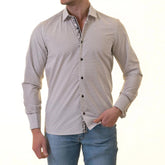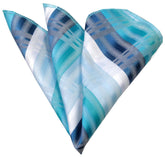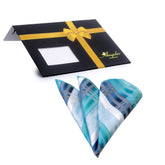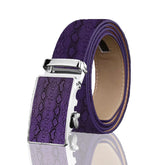Everything a Dapper Man Could Ever Want to Know About Wool
As any gentleman knows, wool is the go-to staple for suits. But how much do you really know about nature’s most versatile renewable fibre?
You should already know that it is the textile fiber obtained from sheep (and certain other animals); But the fact that it is crimped, elastic, and it grows in staples (clusters), makes it remarkably different than hair or fur and a natural choice for textiles. Here is everything you could possibly want to know about nature’s most versatile renewable fibre:
The Best Breeds
Our Eight Favorite Sources

Frequently used in woven outerwear, socks
Defining Characteristics: Black-faced, Woolly-legged
Average Micron Count: 25-33

Frequently used in fine suit cloths
Defining Characteristics: White-faced, Smooth-bodied
Average Micron Count: 17-26

Frequently used in socks
Defining Characteristics: Large size, Woolly-legged
Average Micron Count: 21-25

Frequently used in Tweed cloth
Defining Characteristics: Small size, Bare legs
Average Micron Count: 27-33

Frequently used in thick, heavy sweaters
Defining Characteristics: Medium size, Hardy wool
Average Micron Count: 25-31

Frequently used in carpets and rugs
Defining Characteristics: Medium size, Very coarse fleece
Average Micron Count: 25-33

Frequently used in heavy wool outerwear
Defining Characteristics: Friendly, Hardy, White-faced
Averag : 25-30

Frequently used in underwear
Defining Characteristics: Large size, Very fine fleece
Average Micron Count: 19-24
The Other Sources
(yes, there are other animal sources for wool)
Vicuña:
These animals provide some of the finest, softest wool out there. They’re also rare and can be shorn only once every three years. Translation: their wool is very expensive.
Goat:
Responsible for the suave sheen of mohair, which is often used in tuxedos and the softness of cashmere, both woven and knitted.
Tibetan Chiru Antelope:
This type of fiber is known as shahtoosh and it is soft, warm and very lightweight. It can be hard to find and that means it is quite expensive.
Arctic Musk Ox:
The wool fabric produced is also known as Quiviut. It is The undercoat of the Arctic Musk Ox is more than eight times warmer than sheep’s wool and much finer than cashmere.
Yak:
Each Yak yields between two to three pounds of underhair per year that is just as soft and fine as Merino, but much warmer and stronger. The best part is, it’s hypoallergenic.
Camel:
Camel hair is gathered in spring from the molting undercoats of Bactrian Camels. It is soft and plush and famously used for camel-hair polo coats.






